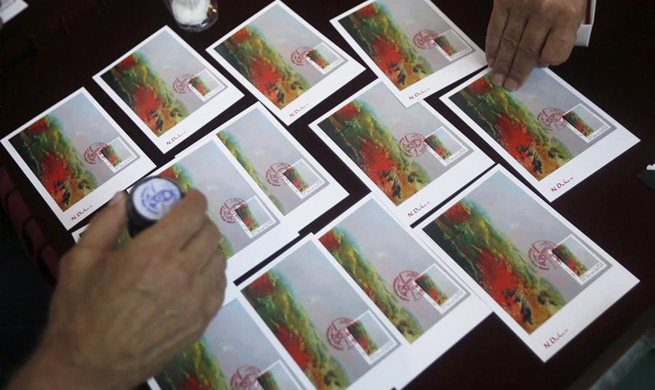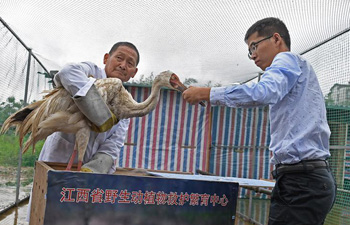WASHINGTON, May 8 (Xinhua) -- American scientists have developed a simple and robust approach for directly reprogramming mature skin cells into immature muscle cells, lending hope to the treatment of muscular dystrophy.
In a study published on Tuesday in the journal Stem Cell Reports, researchers converted mouse skin cells into induced myogenic progenitor cells (iMPCs) by combining transient expression of a protein called MyoD and treatment with three small molecules.
When transplanted into mice with leg injuries, the iMPCs engrafted in the damaged tissue and contributed to sustained muscle regeneration, according to the study.
"Our study reports for the first time on the direct conversion of skin cells into expandable, functional muscle progenitors," said the paper's senior author Konrad Hochedlinger of Massachusetts General Hospital and the Harvard Stem Cell Institute.
"The prospect that iMPCs could be in principle derived from human skin cells has potential relevance for the study and treatment of human muscle conditions such as muscular dystrophies," said Hochedlinger.
Previously developed protocols for generating muscle cells was difficult to maintain regeneration-promoting muscle stem and progenitor cells, known as satellite cells and myoblasts, for long periods of time in culture without losing proliferative and engraftment potential.
Also, methods that convert embryonic or induced pluripotent stem cells into mature muscle cells pose the risk of tumor formation after transplantation.
Although scientists successfully generated muscle fibers from skin cells through expression of the transcription factor MyoD, strategies for directly converting one mature cell type into another have failed to produce enough cells for effective tissue regeneration.
In the new study, Hochedlinger and his team temporarily increased MyoD expression in mouse skin cells, and then treated these cells with three small molecules, GSK3beta inhibitor, a TGF-beta1 receptor inhibitor, and a cyclic AMP agonist, some of which were previously shown to enhance cellular reprogramming.
The resulting cells, termed iMPCs, were capable of long-term self-renewal and large-scale expansion, and they expressed key molecular markers of satellite cells and myoblasts.
In addition, iMPCs retained the ability to produce mature muscle fibers that expressed adult muscle markers and displayed vigorous contractions.
Moreover, iMPCs, when transplanted, gave rise to muscle fibers that sustained tissue regeneration in mice with leg injuries.
The patient-specific iMPCs could be used for drug discovery or gene therapy, or as a valuable source for tissue engineering purposes, according to the researchers.
"If disease-causing mutations are known, as is the case in many muscular dystrophies, one could in principle repair the mutation in iMPCs prior to transplantation of the corrected cells back into the patient," said co-first author Mattia Gerli of Massachusetts General Hospital and Harvard Medical School.

















